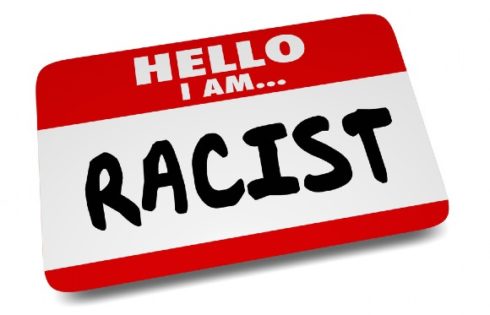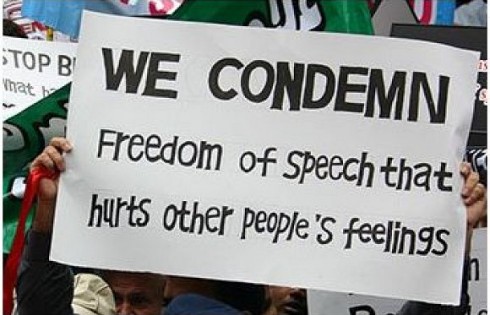It is not immediately apparent why the nation’s attention has turned to a state government dispute fought on the isthmus between Lake Monona and Lake Mendota.
Wisconsin’s budget problem and its long term pension problem are relatively unexceptional. Wisconsin’s per-capita budget shortfall is about 60 percent of neighboring Illinois’. The gap in Wisconsin’s pension will require, according to a Northwestern University economist, 373 percent of tax-revenues to make up, placing Wisconsin twelfth nationwide.
They may have the Super Bowl winners, but Wisconsin is actuarially average. Like most states, Wisconsin is facing a serious and long term budget shortfall because of over promised pensions to state employees. The reason Wisconsin is the epicenter is political. The austerity caucus that is ascendant in the Rust Belt with governors like Mitch Daniels, John Kasich, Rick Snyder, and Wisconsin’s Scott Walker, has collided with the concoction of government workers and university faculty who populate Madison. The result has been a spectacular protest of public workers calling in sick and Democrats in the legislature fleeing for the border state.
The issue is twofold, Governor Walker wants public workers to contribute more of their income to their benefits and he wants to end the practice of public workers collectively bargaining for benefits (they will still be able to collectively bargain for salaries, for instance).
Let’s start with the fiscal problem that precipitated this. There are two kinds of pensions: defined benefit and defined contribution (there are other hybrids of these two). Most private companies use defined contribution plans like 401(k)s in which the individual invests a given amount of money from the employer in order to save for retirement. Defined benefit plans have gone out of favor in the private sector recently, especially with the bankruptcy of many companies with defined benefit plans like United Airlines. Defined benefit plans calculate an income after retirement based on a number of conditions including years of service and final salary. In order to meet this promised payout, employers (mostly states—90 percent of public employees have defined benefit plans) contribute to a fund that is also invested. Most states base their annual contribution off of the reckless assumption that the fund will grow 8 percent or so every year. Endless 8 percent growth of investments has not been a recent reality, in fact, far from it. Thus almost every state has made promises that they do not have the funds to afford even if markets grew 8 percent from here on out.
Governor Scott Walker has proposed a plan that increases employee contributions. Contributions to the pension will go up to 5 percent from basically nothing and contributions to health insurance will double from 6 percent to 12 percent. These don’t come close to solving the long-term problem, but they will prevent large-scale layoffs of state workers. Recently, the public-employee unions have agreed to these cuts, following the pattern of other public-employee unions who bend to political pressure in order to prevent more significant cuts. A Minnesota leader of the AFSCME, a large public employee union, told supporters that he accepted small cuts so as not to “kill the goose that lays the golden egg,”
But what is the golden egg? It’s the enviable position of unions. Public employees tend to receive higher compensation than private-sector workers of the same ability. However, private workers have slightly higher salaries. Compensation is the sum of salary and benefits and public employee benefits dwarf those of the private sector. The defined benefit scheme in which the payouts are far off in the future is a way for politicians who think in four year time frames to push compensation down the road. Some governors have even raided the pension funds or lowered state contributions to plug other holes in the budget, making the present situation far worse.
Unions can take advantage of this fact. Knowing that politicians neglect the far away future, they are able to negotiate lavish pensions in private collective bargaining. These promises have the protection of private property. Even when Orange County and New York City went bankrupt, courts ruled that the pensions were untouchable.
And it’s not just about pensions. The ranks of the public employees have grown while private employment has suffered. The public employee unions are also able to act as lobbyists for a larger government with more employees with higher wages. Especially on the lower level elected positions, the public sector unions are so strong and well funded that they can select their own bosses. At the same time, they are able to collectively bargain like any union. This means that in addition to lobbying the authority, they have direct negotiating power—sometimes negotiating with those who owe campaign favors. Daniel DiSalvo writes in an Autumn essay in National Affairs that should be required reading for anyone interested in the issue:
Insofar as government collective-bargaining agreements touch on a wide range of economic decisions, public-sector unions have extraordinary influence over government policies. In the classic model of democratic accountability, citizens vote in competitive elections for candidates offering distinct policy agendas; once in office, the winners implement their programs through public agencies. But when public-employee unions bargain collectively with the government, elected officials partially cede control of public agencies to unelected labor leaders. Many policy choices are then settled in the course of negotiations between office holders and unions, rather than originating with the people’s duly elected representatives.
Thus, Scott Walker’s reforms also include restrictions that move unions from their very enviable spot to a merely enviable spot. Walker would disallow collective bargaining over benefits for all public sector unions except public safety workers (who should not be excluded), thereby preventing irresponsible politicians from promising lavish health insurance and retirement pensions in non-democratic negotiations. Walker would also change the rules that currently force anyone not in the union but covered by a union negotiated contract to pay annual dues of about a thousand dollars. This would diminish a source of union revenue that goes to campaigns to elect their bosses.
Even more ambitious things must be done to manage the large shortfall in Wisconsin’s and most states’ pensions. The public employee unions that are both traditional, collectively bargaining unions and powerful lobbies are sure to block measures down the road, and maybe negotiate for more irresponsibility. To correct for this, Wisconsin will limit bargaining and make the unions a slightly less effective lobby by diminishing a source for revenue.
Many states have taken steps like this. Twelve states do not grant collective bargaining rights, and another twelve only provide bargaining rights to some state workers.
The standoff in Madison will end at some point and, when it does, we will know the political feasibility of the sort of structural changes that will help responsible governors prevent a pension nightmare. The protests are loud because the stakes are high.
Jeremy Rozansky is the editor of the Counterpoint at the University of Chicago. He is a member of the Student Free Press Association.
Like The College Fix on Facebook / Follow us on Twitter




Please join the conversation about our stories on Facebook, Twitter, Instagram, Reddit, MeWe, Rumble, Gab, Minds and Gettr.